This 7-day trip offers a wealth of culture and natural attractions and hiking opportunities. In spring and autumn, it will offer opportunity to view the eastern Himalayan mountain view from Dochulla pass at 30000 meters above sea level. The visit includes the oldest 7th century ancient temple and monasteries to Royal office and museums. The tour offers a glimpse into the rich history and age-old customs and traditions. Travelers can also enjoy breathtaking natural beauty, stunning landscapes on the drive and vibrant local customs.
The highlight of this tour apart from the TIGER NEST HIKE in Paro and the BIGGEST BUDDHA STATUE in Thimphu. Is the visit to the PUNAKHA DZONG (the palace of happiness) which is majestically located at the confluence of two rivers.
Welcome to the land of the thunder Dragon. We invite you to experience the beauty, culture and spirituality of Bhutan with us. We wish you a beautiful journey thru our kingdom.
Day 1: Arrive at Paro International Airport – Transfer to Thimphu.
Distance: 54 km
Driving time: 1hr 20mins drive.
Altitude in Thimphu: 2400 m / 7874 ft above sea level.
Our pilgrimage begins with a journey towards east into the booming metropolis of Thimphu. Situated at an altitude of 2300 m it is home to 140,000 Bhutanese. Thimphu being the capital of Bhutan, offers unique opportunities to explore the Bhutanese culture, lifestyle and traditions in depth.
We invite you to see the sights of the Kingdom’s capital with us. Below we have listed some of the experiences that we enjoy the most.
Roughly 30-minute drive from the airport towards Thimphu we will stop to have a view of Tachogang Monastery. The temple of excellent horse built by Thangthong Gyalpo (Iron chain builder in Bhutan) in 15th century. Down by the river we can see one of his Iron Bridge. You can take a walk and cross the suspension bridge built just next to the Iron bridge to have a closer look.
Once we arrive Thimphu, we will spend our time circumambulating the sacred National Memorial Chorten. This is a Tibetan-style chorten built in 1974 in memory of the late King Jigme Dorji Wangchuk who passed away in 1972. It is one of the most visible religious structures in town and for many people it is the focus of daily worship. Remember to walk around the Chorten at least once to gain merit and good luck.
Next to the Biggest Buddha Statue at Kunesel Phodrang in Thimphu. This statue of Buddha measures 52 meters. It is one of the largest statues in the world. The statue is made of bronze and is gilded in gold. There are many smaller Buddha statues placed inside.
Next, we will stretch by hiking to the ancient Wangditse Goemba. It is an easy hike thru pine forest and with good overview of King Jigme’s palace. (2 hrs. hike) Wangditse Goemba was founded in 1750 by the attendants of Bhutan’s 8th desi, Yeshey Rabgye. It was renovated in 2002 after it suffered serious damage in a windstorm in 1995. The monastery is further undergoing major renovation after it was destroyed by the earthquake in 2011.
On our way back, we will stop to visit the Mini Zoo. The zoo used to exhibit various indigenous wild animals, which were later released back into the wild by order of the 4th King who declared that such a facility was not in keeping with the Bhutan’s environmental and religious convictions. The zoo now only features the Takin, which is the national animal of Bhutan. The Takins were originally released with the rest of the animals, but had become so familiar with people that they were found wandering around Thimphu looking for food. The only solution was to put them back into captivity.
Overnight in Thimphu.
Day 2: Thimphu.
Phajoding and Pumola Hike:
Time: 7-8 hours.
Difficulty level – Very Strenuous.
This is a difficult hike, yet one of the most popular and enjoyable hiking destinations around Thimphu due to its commanding location above the valley. From the prayer flag decorated area around the Radio Tower, you will follow the trail climbing 660 ft / 200 m steeply upwards to Choekhortse Goemba. A gentler trail continues further up from here up through thick blue pine forest until reaching the first of two chortens which you pass before reaching the group of temples in Phadjodhing (12,100 ft / 3,690 m). After visiting one or several temples and enjoying a well-deserved picnic lunch in the temple gardens where goats graze and puppies run around playfully, continue on the one-hour journey along the mountain side to Pumola Monastery (12,170 ft / 3,710 m). From Pumola, a trail zigzags down the mountain to the Takin Preserve where you can study Bhutan’s national animal. Phadjodhing was at one time one of the richest monasteries in the country. It was founded in the 13th century by a Tibetan yogi looking for a place to meditate. Most of the buildings were constructed by the 9th Je Khenpo in the first half of the 18th century. The many buildings spread out over the mountainside include temples, monk quarters, numerous meditation centres and even a guest house. There is also a sacred cave and a holy water source.
Overnight in Thimphu.
Day 3: Transfer to Punakha.
Distance: 71km
Driving time: 3 hrs drive.
Altitude in Punakha: 1300 m / 4264 ft above sea level.
The sub-tropical valleys of Punakha and the surrounding mountain sides offer a large variety of attractive places to explore and discover monasteries and the most impressive Dzong in the country.
Roughly 50 mins drive we will stop to stretch by hiking to Hongtso Goemba (1 hrs hike). The Goemba was built in 1525 by the older brother of Drukpa Kuenlay, the Divine mad man. It is a two-story traditional Bhutanese building where the main alter room has an enormous statue of Guru Tshoki Dorji in a standing posture together with his spiritual consort. Inside we can view very old wall paintings.
10 mins drive after the end of hike we will reach Dochula Pass (3000 meters). If weather permits, we will have great view of the extended eastern Himalayas in Bhutan. At the pass we will visit Druk Wangyel Monastery located just few meters above the cafeteria.
After Picnic lunch by the riverside we will visit the stunning Punakha Dzong. The Dzong is considered one of the most important and also one of the most beautiful Dzongs in the Kingdom. It was built by Zhabdrung in 1637, and was the seat of the government every winter until Thimphu was established as the permanent capital in 1955. It is still the winter residence of the Central Monastic Body.
Next, we will travel up the valley north and cross the Mo Chhu to hike up and pay respect to the grand Khamsum Yuelley Namgyal Chorten, The Chorten is 30 meters (100 feet) tall and can be seen in the distance when driving or walking up from the footbridge towards the lodge. The three-leveled chorten took eight and a half years to build and was consecrated in 1999. Dedicated to the Fifth King, it was built to remove negative forces and to provide peace, stability, and harmony in an ever- changing world. It is therefore filled with every form of colorful protector imaginable.
Overnight in Punakha.
Day 4: Punakha.
Jungle Hike to Hokatsho – Bhutan’s Largest Lake
Time: Total 6 – 7 hours hike.
Note that due to dense vegetation, mud and leeches, this hike is not recommendable during summer. Difficulty level – Strenuous.
This beautiful untouched lake is hidden away in the middle of dense jungle vegetation. Those who venture on this journey are up for an exciting meeting with overwhelming beautiful nature up close.
The hike starts on a red mud path sloping uphill through small villages before reaching the 15th century temple Chorten Nyeabu (described above). From here, the path follows a man-made creek all the way to the lake. As you proceed upwards, the vegetation gets denser. The mesmerizing sounds created by the many interesting insects are impressively loud and sedative. When reaching the lake, a small path leads down to the water for some magnificent views of Hokatsho in its peaceful and untouched surroundings. Take a few minutes to take in the beauty of the setting before continuing down again on an alternative path which is not as steep. (Should you wish to walk around the lake, this takes about two hours.) When reaching the village nearby Chorten Nyeabu, we can arrange for you to have your picnic lunch in one of the charming farmhouses scattered on the hillside overlooking the valley. Here you can enjoy the gorgeous views from the family room whilst sipping some ngaja with the locals, before commencing on the last hour down to the pickup point.
If time permits, we will drive at a hill top to visit a Sangchhen Dorji Lhendrup Lhakhang (Nunnery) built by maternal grandfather of the king. The Nunnery also serves as higher learning institute and meditation center for Nuns. It is perched on a ridge overlooking the Punakha and Wangdi vally.
Overnight in Punakha.
Day 5: Transfer to Paro
Distance: 125 km
Driving time: 4 hrs drive.
Altitude in Paro: 2300 m / 7544 ft above sea level.
The journey west takes us back to Paro valley crossing the Dochula Mountain Pass, side stepping Thimphu city and following wang Chhu river and and Pa Chhu rivers before arriving in Paro.
At Dochula pass we will take the hike.
Dochula – Lungchutse – Tashigang Goemba Hike.
Time: 4-5 hours
Difficulty level – Moderate.
One of the most rejuvenating and picturesque hikes during your kora journey is the Dochula to Lungchutse and Trashigang Goemba, not only the hike itself is beautiful, but the 360° view from Lungchutse temple is one of the best you will get of the Himalayan mountain range.
You will start your hike from the large chorten in the middle of Dochula, the pass between Thimphu and Punakha at 10,300 ft / 3,140 m above sea level. From here the trail slowly climbs a ridge through a forest of hemlock, birch and rhododendrons until reaching an open meadow. Again, you will enter into forest of moss-covered rhododendrons, gigantic hemlocks, junipers, and bamboo undergrowth. A small trail leads you the last 160 ft / 50 meters past a row of fluttering prayer flags up to Lungchutse temple.
On clear days, the view from the temple is fantastic! You will have a 360° view of the Himalayas including views of Jumolhari (24,000 ft / 7,314 m), Masang Gang in the region of Laya (23,500 ft / 7,158 m), Zongophu Gang – a Table Mountain that dominates the isolated region of Lunana (23,160 ft / 7,060 m) and Gangkhar Puensum, the highest peak in Bhutan and the highest unclimbed peak in the world (24,600 ft / 7,497 m). You can also see Gasa Dzong, as a tiny white speck in a sea of green almost 31 miles / 50 kilometres to the north.
A trail to the left just 490 ft / 150 m below Lungchutse, leads to Trashigang village and temple. It slowly descends through spruce, rhododendron, hemlock and juniper forest. The village’s many dogs will warn the villagers about your arrival as you walk through the settlement down to the temple. It is nice to have lunch around the chorten in the temple’s courtyard while watching the monks in their daily endeavors.
The trail leading down from the front of the temple zigzags quite steeply down the side of the mountain until reaching a farm road which takes you up to the main road. Unless you have had enough hiking for one day, you might also want to visit Hongtsho village temple on the hill side to the right on the opposite side of the road. This involves a 30 – 60-minute short hike up through the little village and back down again the same way.
Trashigang Goemba was built in 1786 by the 12th Je Khenpo. It is an important mediation centre, and houses statues of several Je Khenpos who meditated here.
After the hike we will continue our journey to Paro.
Overnight in Paro.
Day 6: Paro.
Today’s exploration of Paro valley begins with an early hike to Taktsang Goemba (Tiger’s Nest monastery) 4-5 hrs. hike.
The monastery is one of Bhutan’s most revered monuments. It literally hangs off the face of a cliff 900 meters above the valley floor. The legend states that Guru Rinpoche flew into Paro valley on a mythical tigress and meditated in a cave where Taktsang stands today. The Taktshang Goempa is built around the cave. The hike offers spectacular views of the Goempa and the valley below. Horses or mules can be arranged on request to help lighten the journey.
Lunch at Farm House followed by Traditional Hot stone Bath which will help easy your muscle pain from the climb.
Next, visit the auspicious Kyichu Monastery. The seventh century monastery is one of the oldest and most sacred temples in the Kingdom. The Tibetan King, Songsten Gampo ordered the establishment of monasteries in the Himalayan region to subdue evil spirits and to spread Buddhism. Of the 108 monasteries two were built in Bhutan namely the Kyichu Lhakhang and the Jampa Lhakhang in Bumthang.
The hike to the famous Taktsang Goemba and the visit to the oldest temple of Bhutan is a great finish to this day of cultural immersion and your journey to this ancient kingdom of BHUTAN.
Overnight in Paro.
Day 7: International Departure.

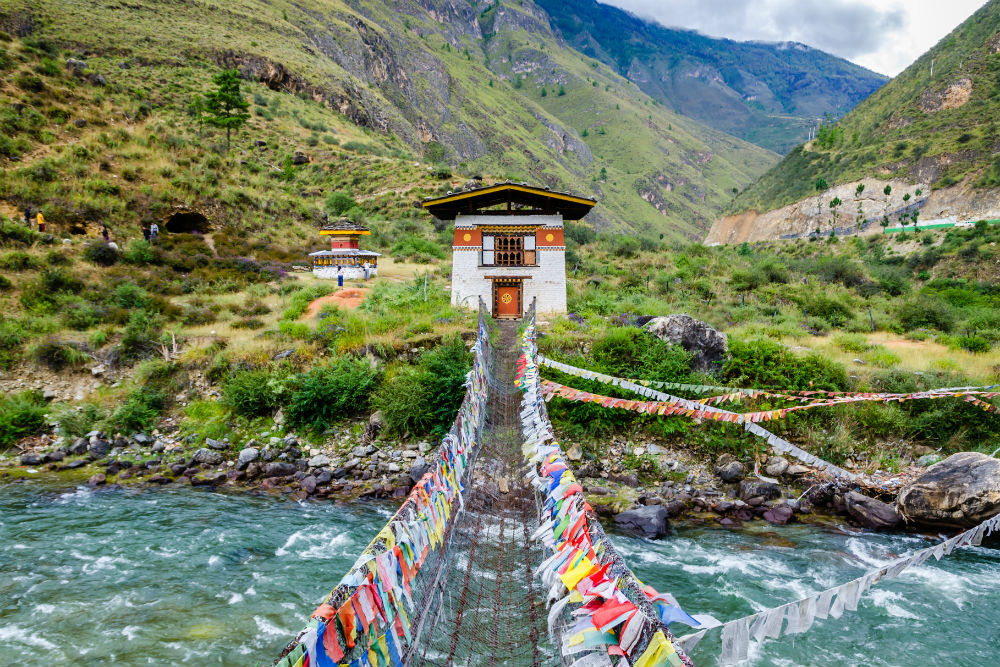
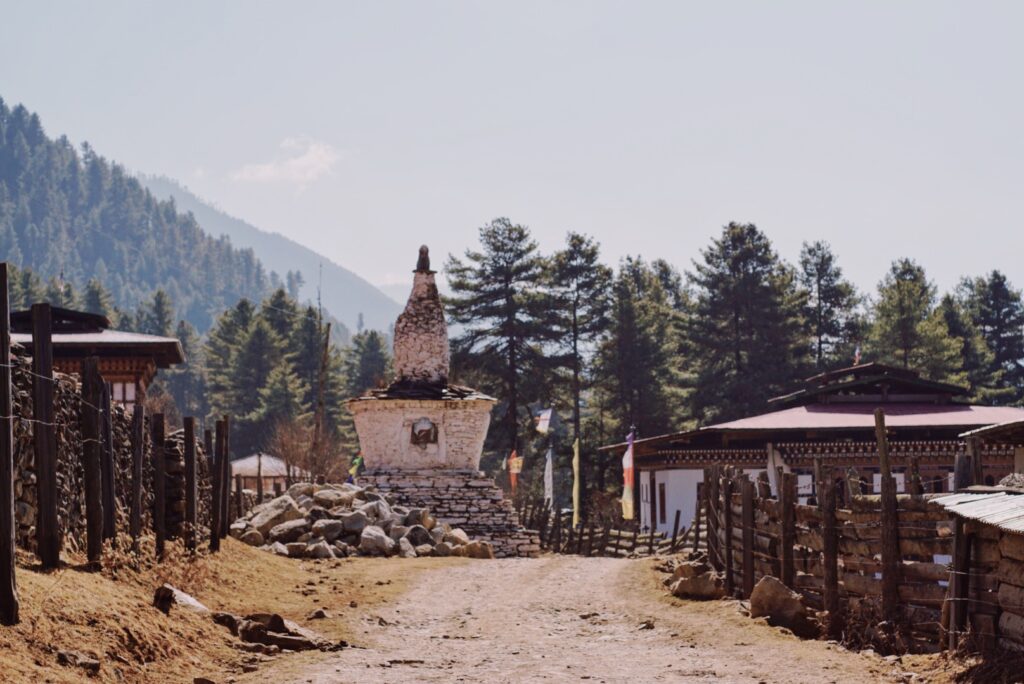
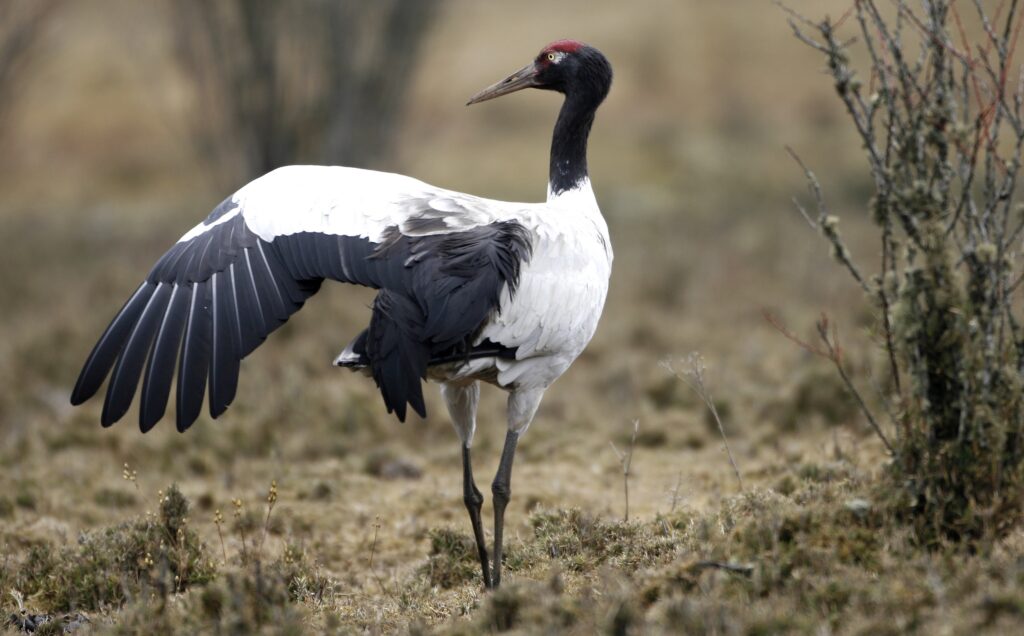
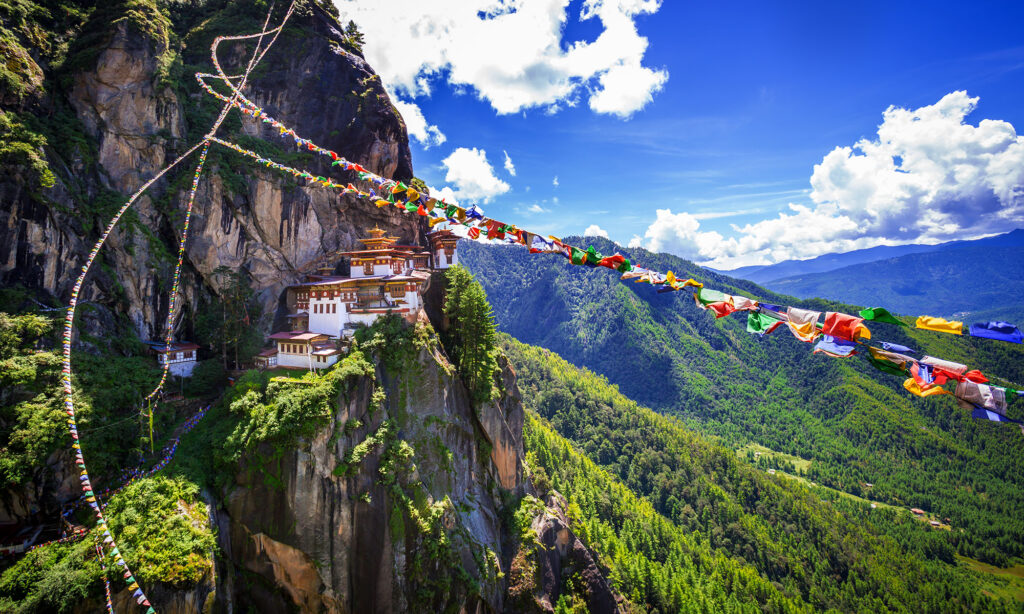
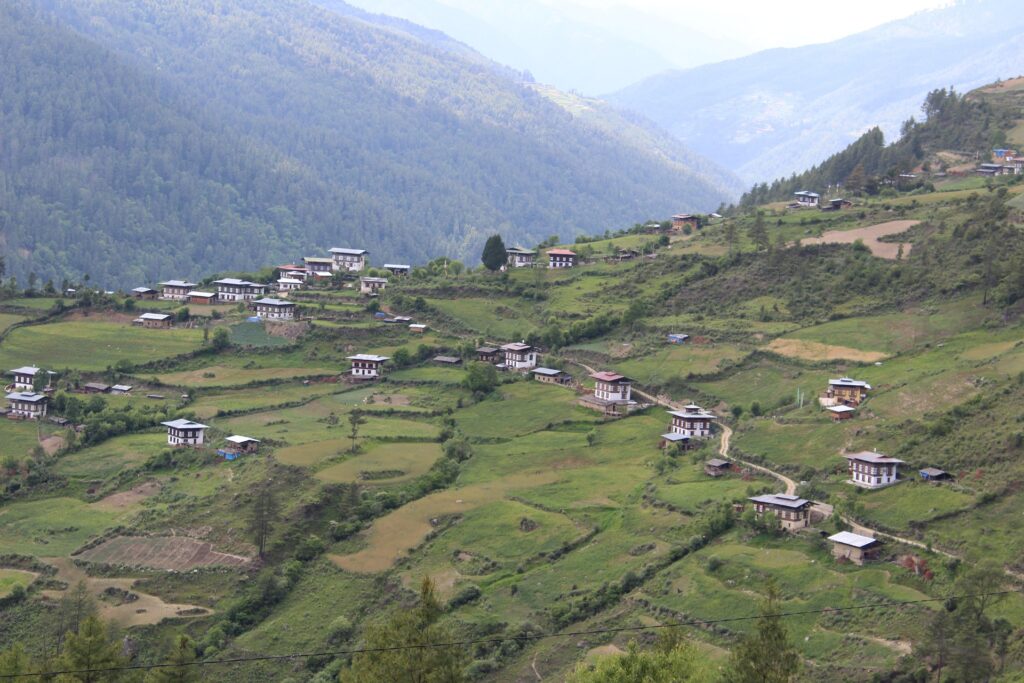
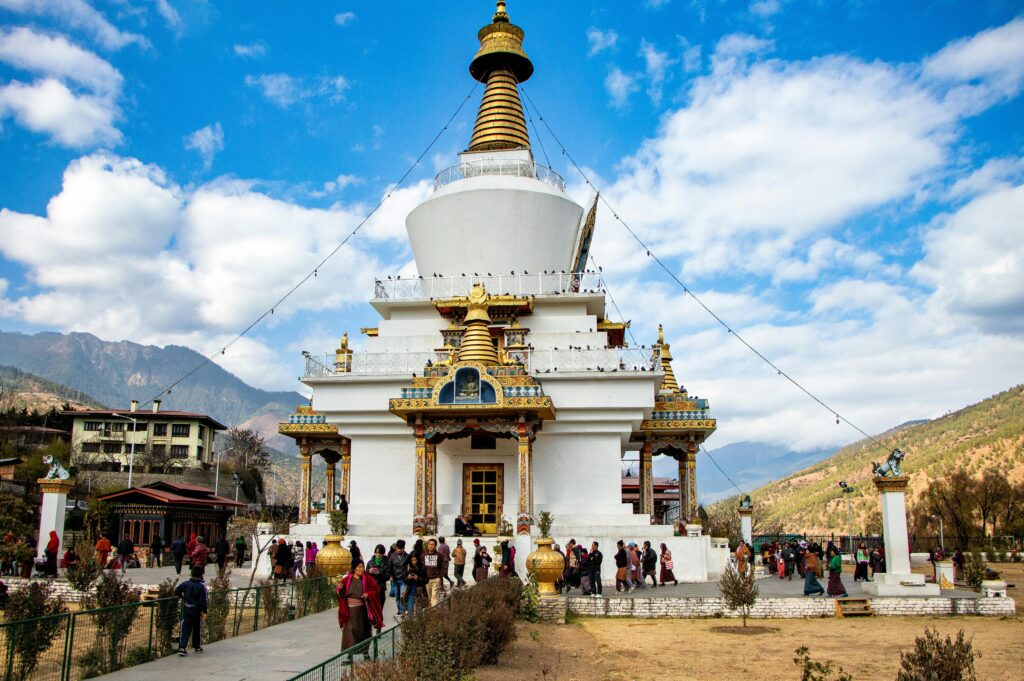
Leave a Reply
Your email is safe with us.